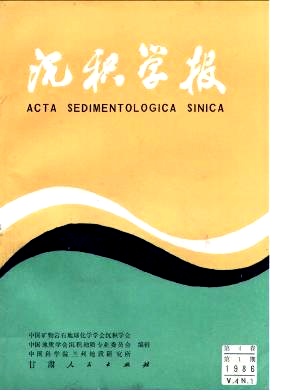BIOTURBATE STRUCTURES OF LOWER CARBONIFEROUS SERIES IN CHAOXIAN COUNTY, ANHUI PROVINCE
- Received Date: 1984-02-27
- Publish Date: 1986-03-10
Abstract: The Lower Carboniferous Series is well developed in the Chanxian County area and can be divided into three formations: Jinling (C1j) , Ga-olishan ( C1g), and Hezhou ( C1h ) Formations. It is underlain by terrigenous clastic rocks of the Wutong Formation of Upper Devonian Series (D3w)and overlian by the carbonate rocks of the Huanglong Formation of the Middle Carboniferous series ( C2h ) . These formations are mostly composed of marine carbonates and commonly associated with sandstones and mudstones. It is 29 meters thick. Bioturbate structure appears mainly in the Gaolishan and Hezhou Formations. ( 1 ) Grey-white,medium-fine grained guartz arenite is a kind of very strong bioturbate rocks at the top of the Gaolishan Formation ( plate Ⅰ, 1、 2 ) . Two types of burrows can be seen on the weathered outcrop. The first type is large burrows with sand-filled laminae, which are 20cm long at the most, commonly 5-10cm long with diameters of 1-2cm. They mostly occur parallel to bedding planes. Some of them looks like heart-urchin burrows or possess echiurus burrows with spreites, and curved trails, redeposited tubes or conical pipes (H.E. Reineck, 1980, Fig. 554). The second type is shorter,single, bifurcated, or U-shaped borrws, perpendicular orinclined to bedding planes. The delicate forms can be preserved in single burrow systems. Most of them consist of dense, contorted, and interpenetrating burrows. These sandstones are the sediments of retransported organisms. They are formed from foreshore to upper shoreface in sandy beach. ( 2 ) A particular bioturbate structure-regular feeding trail can be found in grey-black micrite in the lower part of the Hezhou Formation ( pl-ateI, 3 ) . It is distributed along the bedding planes. It looks like the one in Fig. 4-23 in the "Sand and Sandstone" (Pettijohn, 1972), and Sei-lacher's (1964) "Zoophycus-facies", which are horizontal burrows in deep- water deposits, representing the rare trace fossils of offshore. ( 3 ) The upper slag limestone in the upper part of the Hezhou Formation is also a kind of strong bioturbate rocks. The slag or honeycomb-shaped structure appears at the top of the beds.Burrows may be bored holes of worms, molluscs and echinoderms, etc., which are generally smooth and either vertical or inclined at different angles to bedding planes. The filling of the bored holes is yellowgreen limemud ( plate 4, 5, Fig.2 ) . They were formed in the environments from upper shoreface to foreshore. Undoubtedly, the discovery of these marks would be helpful to the fa-cies-analysis of the Lower Carboniferous Series in the Chaoxian County area.
| Citation: | Zhao Chenglin. BIOTURBATE STRUCTURES OF LOWER CARBONIFEROUS SERIES IN CHAOXIAN COUNTY, ANHUI PROVINCE[J]. Acta Sedimentologica Sinica, 1986, 4(1): 43-48. |






 DownLoad:
DownLoad: